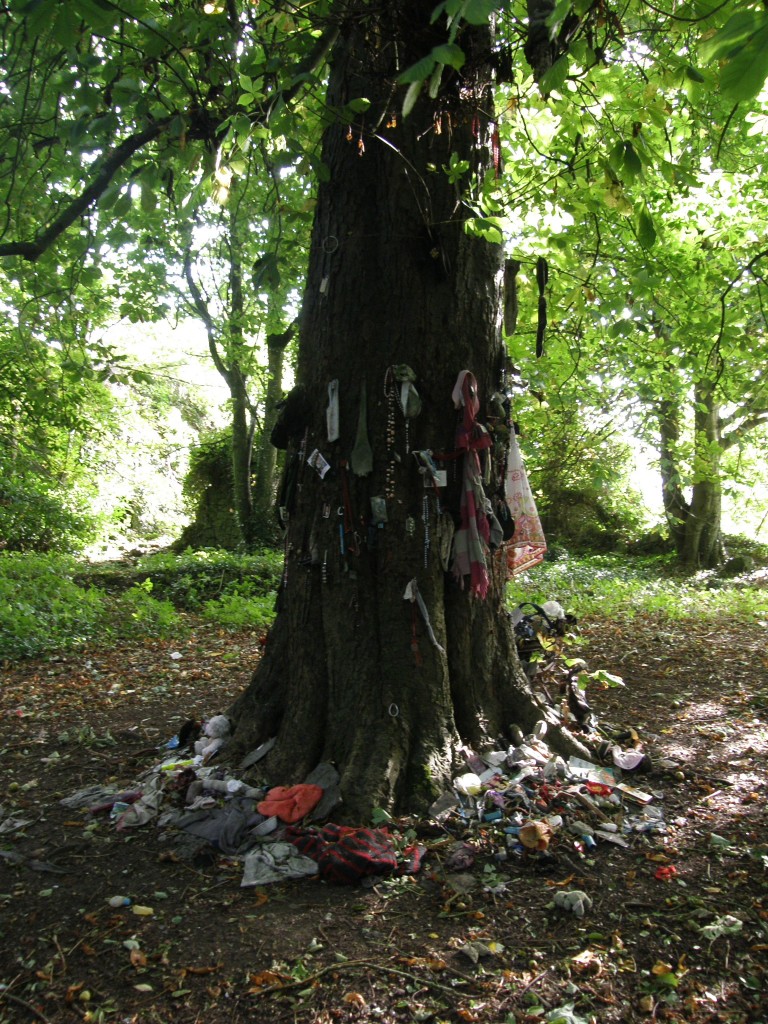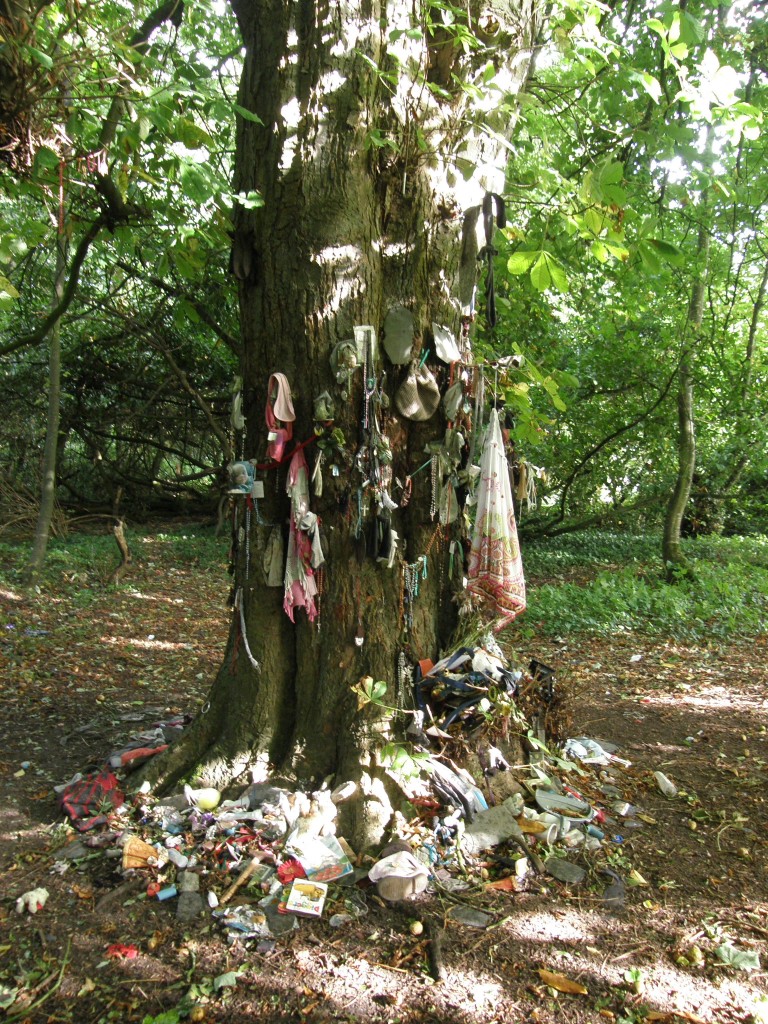At lunch after church in Banagher, Ireland, this past Sunday I was told that I’d missed something when I went to see St. Brendan’s Cathedral in Clonfert … evidence (as my informant put it) that “paganism is alive and well in Ireland.” What I had missed is called a “votive tree” or a “wishing tree”. I decided that before I left Ireland I would go back and see this thing.
Then, perusing the morning’s papers online, I came across a story in England’s The Daily Mail entitled Who says money doesn’t grow on trees? Coins mysteriously appear in trunks up and down the country about similar trees in Great Britain.
Apparently this is not a phenomenon limited to Ireland and England; Scotland and Wales have such trees, too. And there are others in such places as Hong Kong, Argentina, and Belgium. (Wikipedia has an article about wishing trees here.)
While some trees (like the ones described in the Daily Mail article) are “coin-only” trees, the tree in Clonfert is not. It is festooned with neckties, dolls, Roman Catholic holy cards, pictures of babies, toys, brassieres, hats, rosaries, cigarette packages … in incredible variety of things.
I’m not surprised to find a “holy tree” in Ireland; finds plenty of “holy wells” in this country, why not a holy tree? After all, although partially disputed by some modern Celtic scholars (for example, Peter Berresford Ellis author of The Celts: A History and Celtic Myths and Legends), the Roman authors Lucan and Pomponius Mela, claimed that the Celts of Gaul worshiped trees and met for religious rites in sacred groves, a practice which Tacitus and Dio Cassius claimed to have found among the Celts in Britain. The names of certain Celtic tribes in Gaul reflect the veneration of trees, such as the Euburones (the Yew tribe), and the Lemovices (the people of the elm).
In fact, “holy trees” are often found next to holy wells. Although it is the well not the tree that is considered the source of blessing or healing, one often finds votive objects tied to a nearby tree with strips or rags of cloth in the belief that, while the object remains, the prayers will still be effective. These trees are are often called “cloutie trees” (“cloutie” [Irish] or “clootie” [Scots] is a slang word for “rag”, perhaps from the Gaeilge clúidín for “small covering [or] napkin”).
There is no well next to St. Brendan’s Tree, although there is a path called “the Nun’s Walk.” I’m told that this path originally led to the Bishop’s residence and, apparently, there was a convent associated with the cathedral; a first portion of the road one takes from the Clonfert cathedral back to Banagher is called “Nunsacre Road”.








Leave a Reply